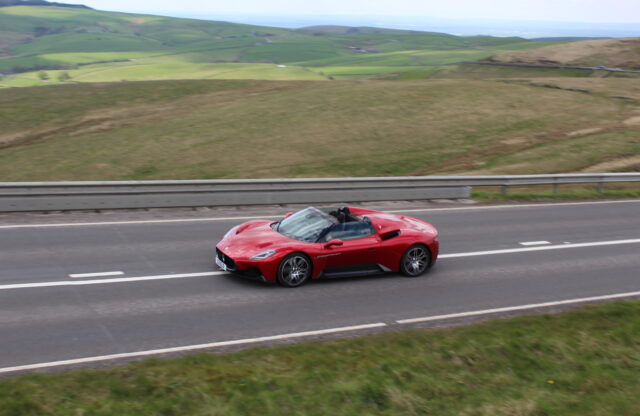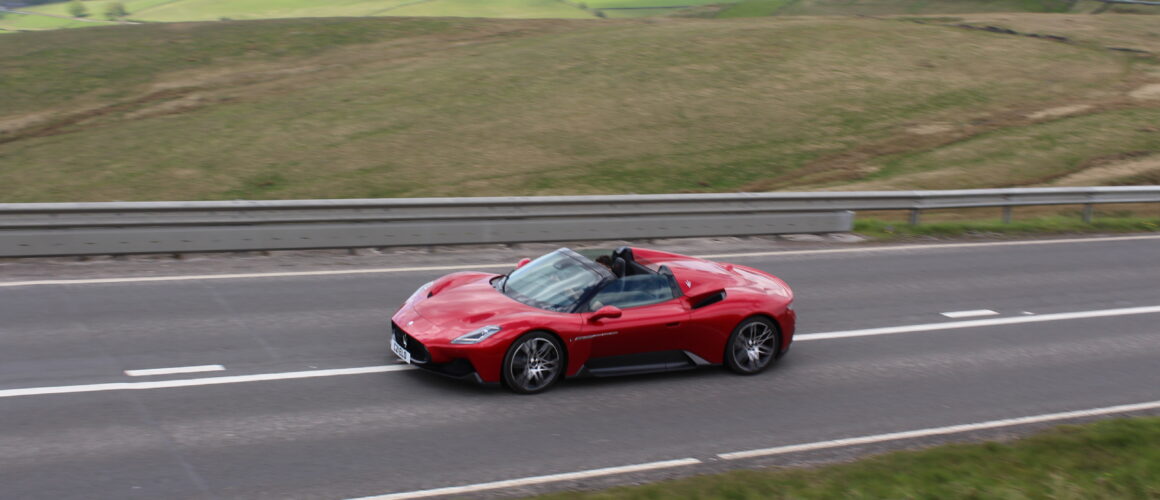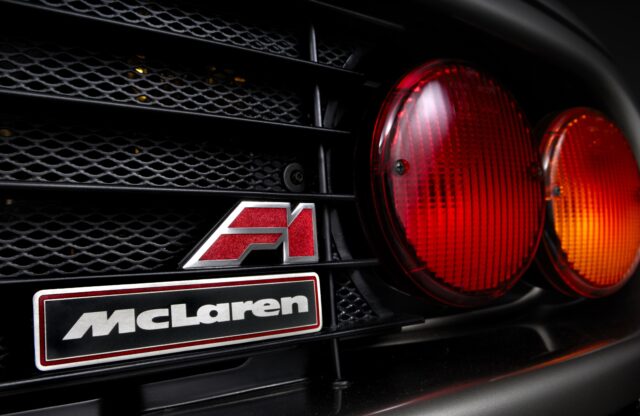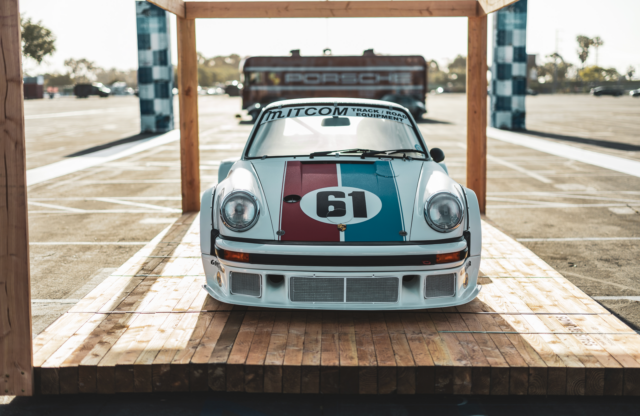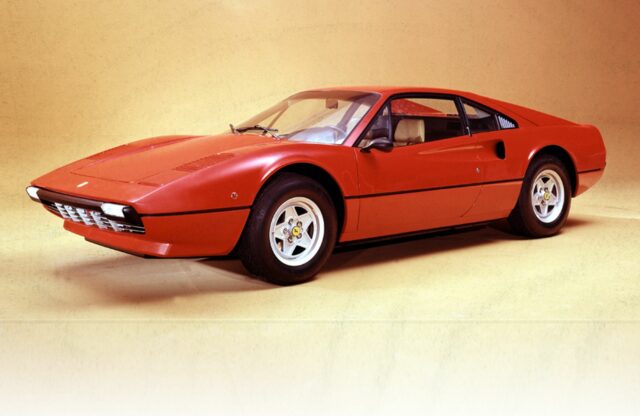With looks to die for, a lightweight carbonfibre monocoque and a twin-turbocharged engine that develops over 200bhp per litre, the 2020 Maserati MC20 supercar signified a statement of intent for the Italian manufacturer. Forget about the diesel saloon cars and humdrum SUVs the Trident has churned out in recent years – this wonderful wedge of ambitious exotica symbolised the beginning of Maserati’s renaissance.
Rather than rest on its laurels, in 2023 the marque fired another shot across the bows of Maranello and Woking in the form of the MC20 Cielo. Named after the Italian word for ‘sky’, the Cielo introduces the allure of open-air motoring with a retractable glass hard-top that transforms the sleek coupé into a glamorous convertible in a mere 12 seconds.
On paper, the Cielo makes a strong case for itself over the coupé. Thanks to its Dallara-developed carbonfibre tub, the model’s structural rigidity remains unchanged and the handling uncorrupted. The main drawback is 63kg in additional weight, which seems inconsequential for a car that is far more likely to be spotted on the boulevards of St Tropez than in the pitlane of Portimao.
Take the powertrain into account, and 63kg seems wholly insignificant. As with the standard car, the Cielo’s rear wheels are driven by Maserati’s 3.0-litre Nettuno V6 that develops 621bhp and 538lb ft of torque. Unlike Ferrari and McLaren, Maserati decided not to supplement the engine’s output with a complicated hybrid system.
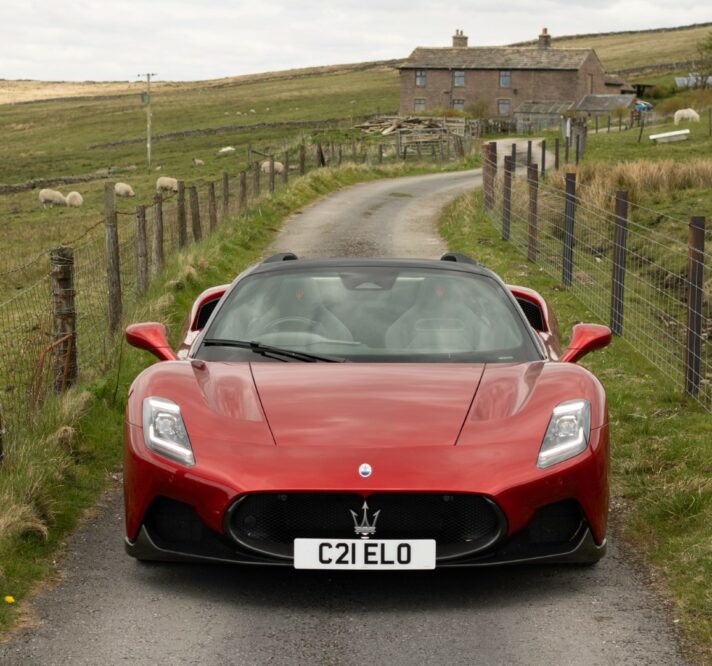
The wastegate flutters and whooshes, venting boost pressure once the throttle plates have snapped shut
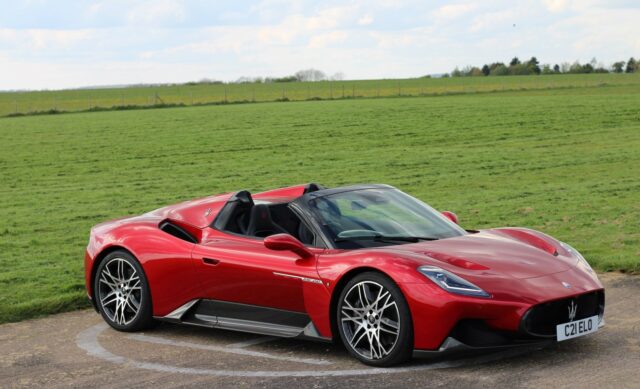
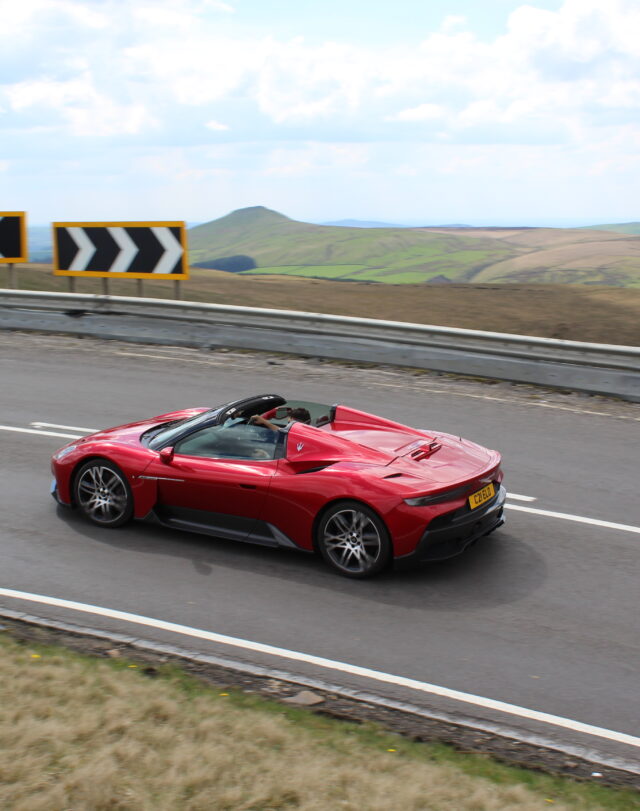
What makes the Nettuno engine special is Formula 1-inspired pre-chamber jet ignition that uses twin injectors and spark plugs. The patented system is designed to squeeze as much energy as possible from every millilitre of petrol, and the results speak for themselves: 0-62mph in 2.9 seconds, 0-124mph in just 8.8 seconds and a top speed of 203mph.
The marque proudly proclaims that the cutting-edge Nettuno V6 is “100 percent Maserati”, and is the first engine developed completely in-house since 1998. Despite this, the bore, stroke, cylinder angle and displacement are suspiciously similar to that of Alfa Romeo’s 690T V6, which, ironically, is a derivative of the Ferrari F154 V8 found in the F8 Tributo. Make of that what you will, but the performance figures speak for themselves.
As impressive as the stats sheet is, you can’t help but be enraptured by the sculptural beauty of the bodywork once you see the MC20 Cielo in person. From the voluptuous curvature of its haunches to the grille reminiscent of the iconic A6G’s, and the seamless integration of the buttresses with the engine lid, the Maserati is teeming with captivating design details – especially when finished in this test car’s deep, sumptuous Rosso Vincente paintwork and contrasting carbonfibre.
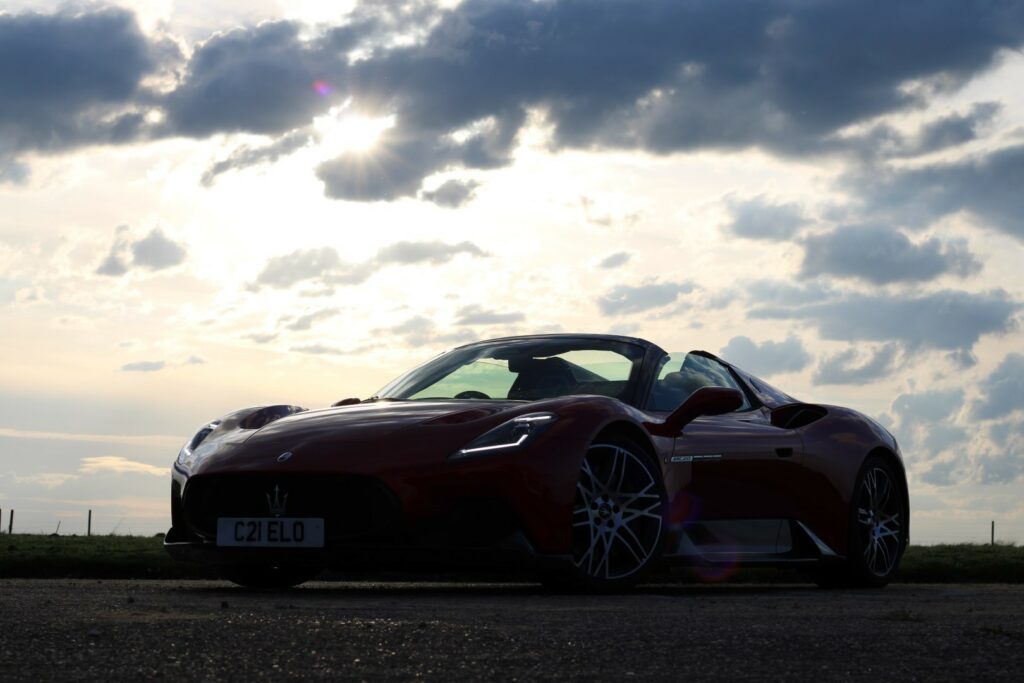
It’s also refreshing to see that design director Klaus Busse’s styling remains uncluttered, shunning the profusion of aerodynamic appendages that have become obligatory on so many modern supercars. Instead of such embellishments, the Cielo generates its downforce primarily through a network of undercar strakes and vanes that channel air to the rear diffuser. It’s almost incongruous that such a sculptural, yet aerodynamically sophisticated machine was developed almost entirely through virtual means over a mere two-year period.
Swing open the dramatic dihedral door, and you’re greeted with a cockpit that mirrors the simplicity of the exterior – albeit with a little less overtly Italian flair. After you’ve settled into the Sabelt-supplied driver’s seat, you’re greeted with a carbon and Alacantara-trimmed steering wheel, huge shift paddles that are fixed to the steering column and a large LCD instrument display screen. Dividing you from the passenger seat is a central tunnel that’s dominated by a knurled drive mode selector, as well as buttons for Drive and Reverse gears and switches for the windows and wing mirrors.
While the interior quality is generally decent, with the exception of some loose carpeting on the sills, one can’t help but question whether it meets the standards of a vehicle with a base price of £247,025. The use of Fiat and Alfa Romeo screens and switchgear is understandable for a company of Maserati’s size, but some of the ergonomic decisions are perplexing, to say the least.
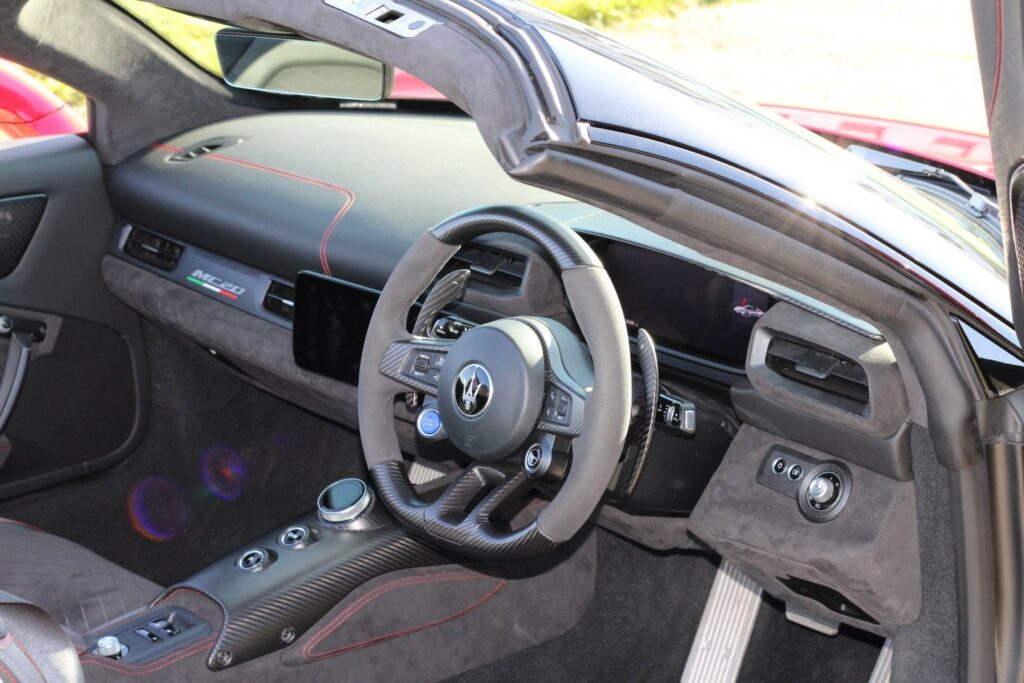
The lack of a Park button, for instance, means that you must pull both paddles to find neutral and then engage the discreetly positioned electronic handbrake underneath the dashboard. This isn’t the most intuitive process, and the fact that the retractable roof and climate controls have been relegated to touchscreen menus seems like another own goal.
As with any great supercar, however, many of these minor foibles are quickly forgiven and forgotten once the Maserati is unleashed on the open road. Over the course of a week, I experienced it in various scenarios – from mundane motorway slogs to exhilarating blasts across the Peak District and Snake Pass. Yet the car’s standout attribute revealed itself within just the first few miles: its ride quality.
Put simply, the ride is the best I’ve experienced in a supercar since the McLaren 720S, which uses computers to continuously adjust its hydraulic cross-linked dampers. The Maserati achieves a similar result through a unique five-link suspension system that allows for longer-travelling springs than a double-wishbone set-up.
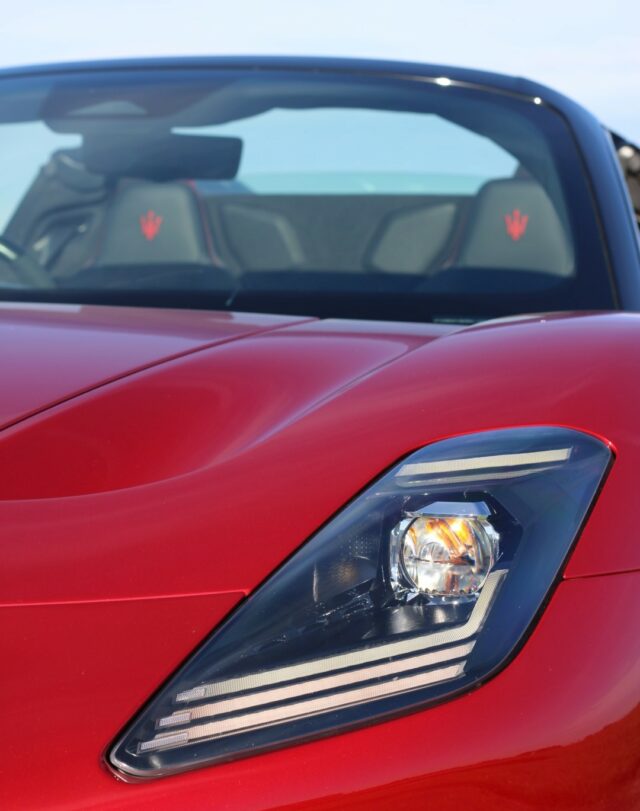
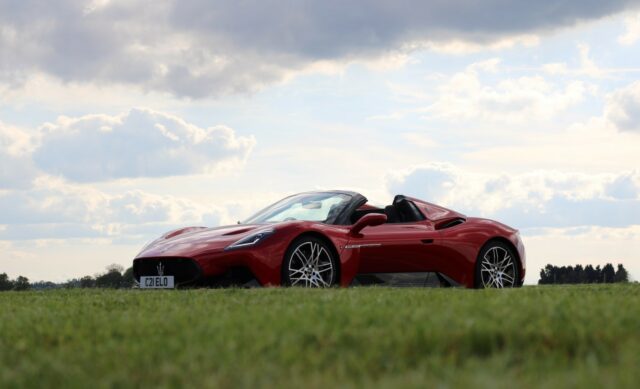
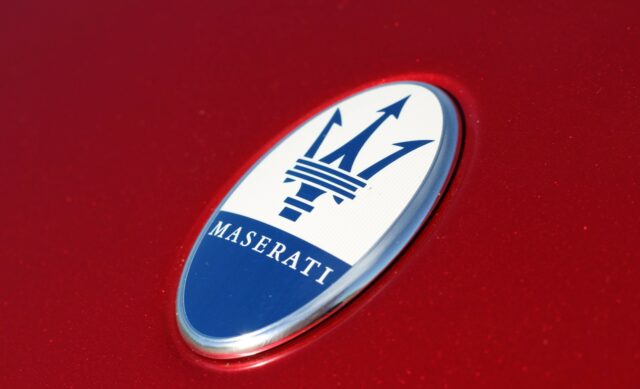
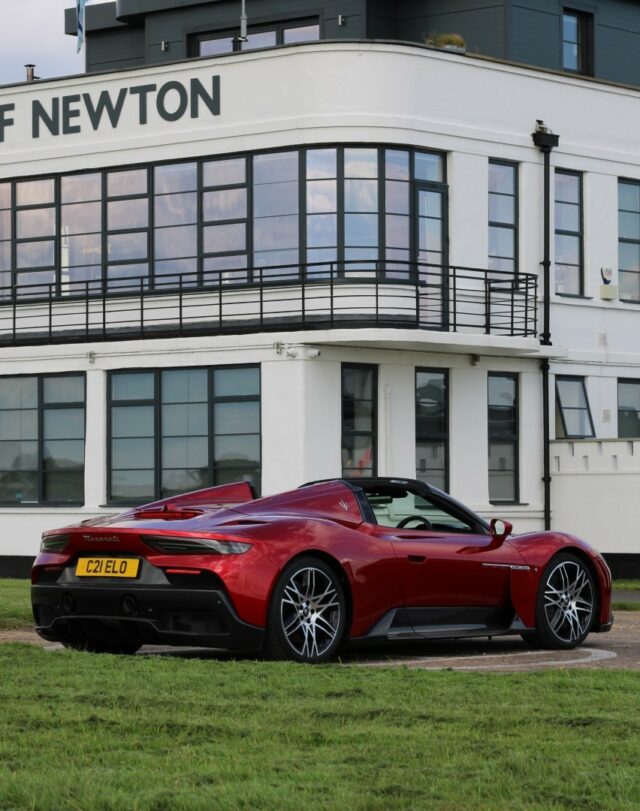
This five-link suspension comes into its own on Britain’s dilapidated roads, allowing you to relax and savour the driving experience rather than fixating on every crack, pothole and speed bump. The plush ride and adjustable damping also make the Cielo a surprisingly capable grand tourer – undone somewhat by its miserly 60-litre fuel tank and a tiny rear boot that gets hot over long journeys.
The Cielo feels every bit as potent as its performance figures suggest. Flex your right ankle, and the eight-speed ZF dual-clutch transmission drops a couple of ratios as that 621bhp pins you into the backrest and you sprint toward the horizon. The engine note is unashamedly turbocharged, with the crescendoing impeller hiss accompanying the powerplant’s bark towards its 8000rpm redline. Lift off the accelerator before you get there, and the wastegate flutters and whooshes, venting boost pressure once the throttle plates have snapped shut.
Aural histrionics are amplified by the ability to lower the roof. Granted, the Maserati’s soundtrack may not be a match for the spine-tingling note of a Lamborghini Huracán, but it’s sufficiently loud and dramatic enough without becoming tiresome over long distances.
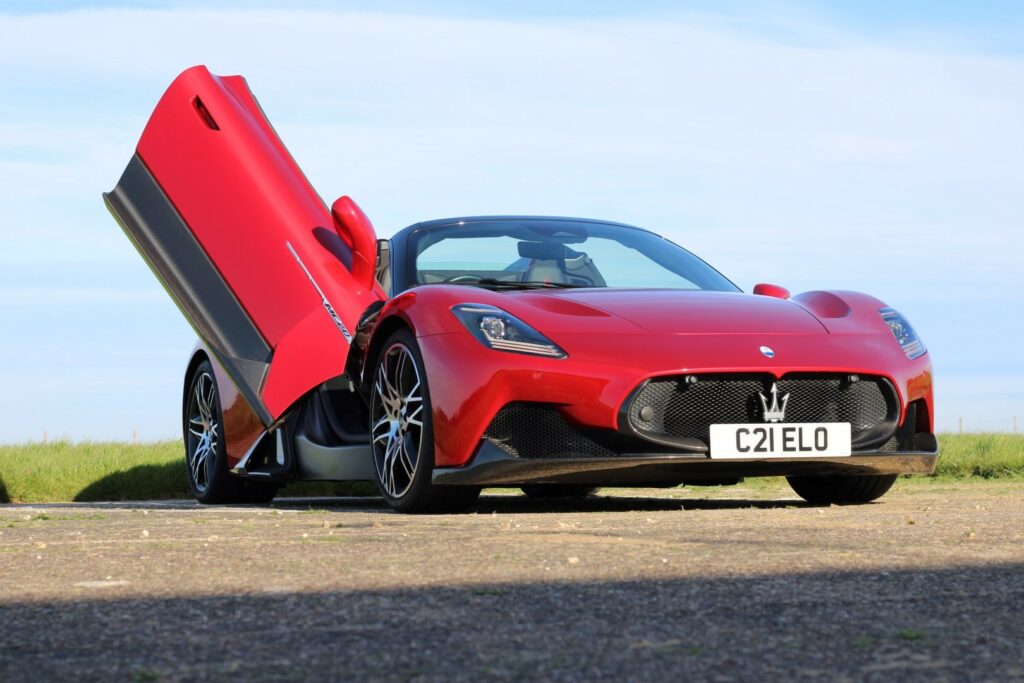
Maserati has recalibrated the driving modes for the MC20 Cielo. The most tame setting is Wet, which slackens off the throttle response and adaptive dampers for slippery driving conditions. Even with this enabled, however, the obstreperous machine is a handful in the rain, and the systems frantically and abruptly cut the power to prevent its rear wheels from breaking traction with limited success.
GT and Sport mode are where you’ll spend most of your time on the public road, and both are largely well judged. GT has softer default suspension settings than in the coupé, although it’s possible to tweak the damper rates independently in each mode, ranging between soft and mid in GT and Sport, and from mid to firm in the craziest Corsa setting. Due to the state of the UK roads, I spent the majority of my time in the soft and mid settings, which, as mentioned, are excellent.
Aside from the dampers, the main tangible differences between GT and Sport are the aggression of the throttle map and gearchanges. The throttle map in GT is still perhaps a touch too aggressive, but the gearchanges are buttery smooth. Naturally, the throttle map is even more aggressive in Sport and the transmission is much snappier.
Corsa, on the other hand, is best kept to the track; the throttle becomes extremely responsive and the gearchanges so violent that they can upset the balance of the car when accelerating hard out of a corner.
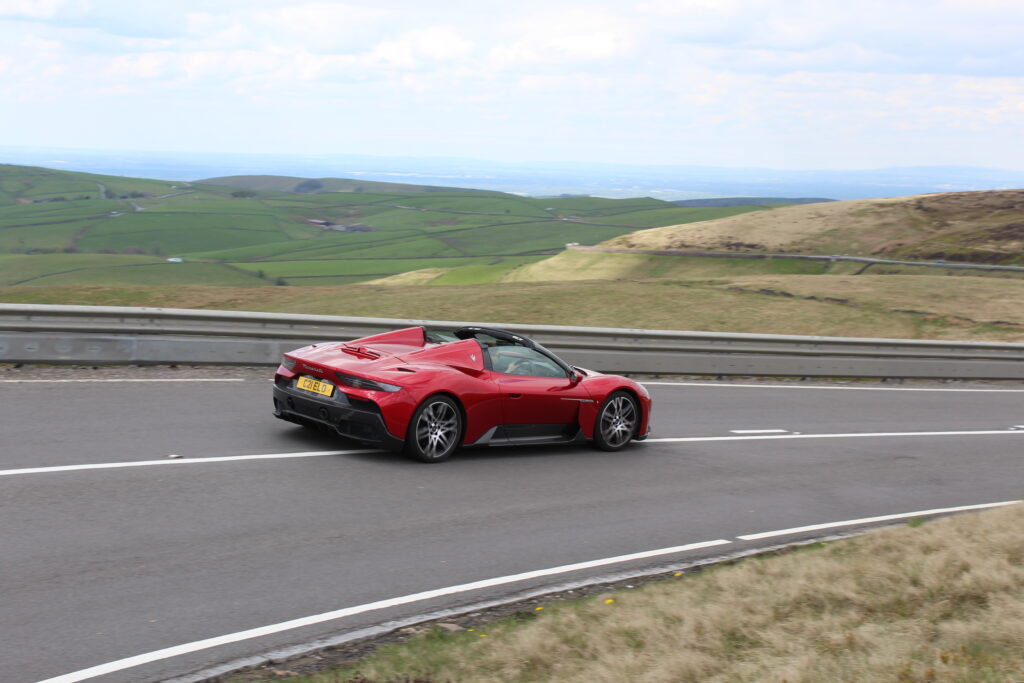
On twistier roads, the electronically assisted power steering is another highlight. With a 12:1 ratio, the Cielo’s rack is fast without feeling as hyperactive and sharp as the equivalent modern Ferrari. The turn-in feels crisp and the steering provides you with enough feedback to know what the front tyres are doing when you’re seriously pushing on.
The brakes are another part of the controls that seem perhaps more laid back than you might expect. While the pedal feel in many modern supercars is very firm, the top of the travel in the MC20 is surprisingly soft. To some, this might feel disconcerting, but once you’re used to giving the brakes a prodigious shove, the carbon-ceramics bleed off the speed very effectively indeed – which is good news when the powertrain is so potent.
Despite the relative softness of the brakes, Maserati decided to place the pedal so that it favours left-foot braking. This means you have to stretch your right foot further than you expect, and seems like a strange choice in anything other than a focussed track car, although you quickly get used to it once a few miles are under your belt.
After my time with the MC20 Cielo was over, it was clear that this is a car with two personalities. On the one hand, it’s a hard-edged, thrilling supercar with looks, pace and presence that are more than a match for its established rivals. Yet it’s also a machine that’s dripping with Maserati’s grand-touring DNA, which makes it one of the most usable mid-engined supercars on sale – as long as you don’t have much luggage and aren’t averse to regular trips to the petrol station.
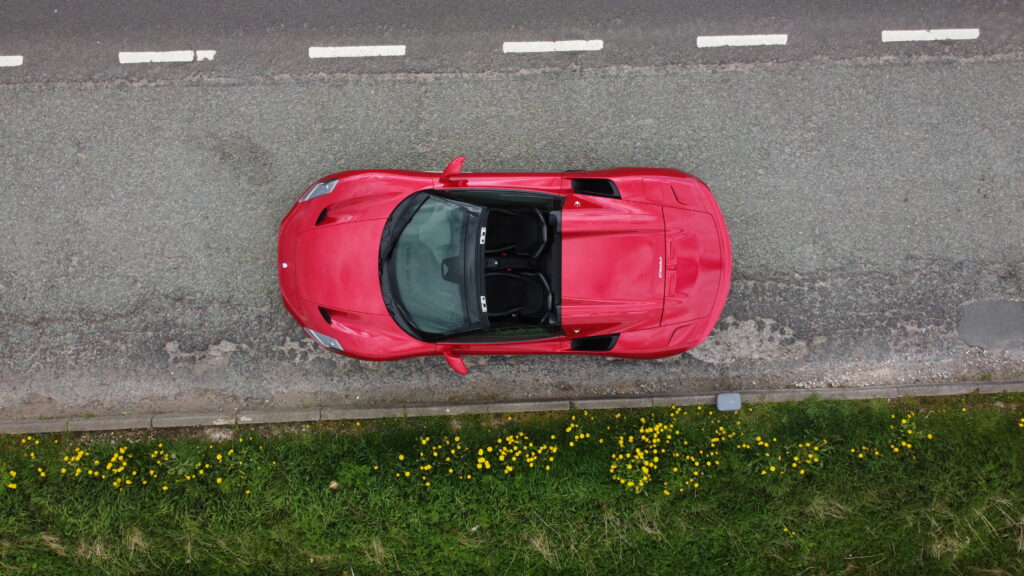
The roof-down Cielo recipe only adds to what is an already very appealing and glamorous package. The only real question mark is the price: including £70,570-worth of options, Maserati’s press car came in at a very punchy £322,530. I just hope enough people with the means are open-minded enough to try it; Maserati is back, and they certainly won’t be disappointed.
